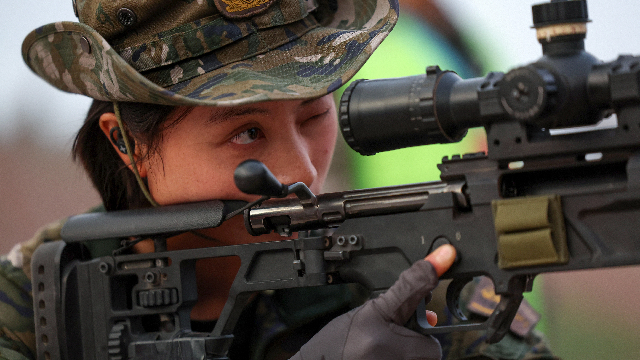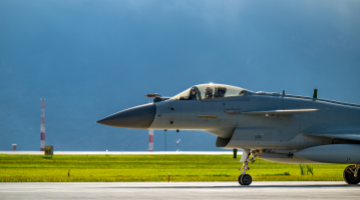By Feng Yaren and Da Qiao
US President Joe Biden, British Prime Minister Rishi Sunak and Australian Prime Minister Anthony Albanese announce the details of the plan to equip Australia with nuclear submarines on March 13, 2023. (Photo from Visual China Group)
On March 13, US President Joe Biden held talks with British Prime Minister Rishi Sunak and Australian Prime Minister Anthony Albanese on the AUKUS, a new enhanced trilateral security partnership between the US, the UK and Australia, at the Naval Base San Diego in California, and announced the details of the plan to equip Australia with nuclear submarines. This means that Australia is to become the 7th country in the world to introduce nuclear-powered submarines to its naval fleet.
According to the joint statement released by the US, the UK and Australia after the meeting, a phased plan will be adopted to deliver conventionally armed nuclear-powered submarines to Australia at the earliest possible date. From the early 2030s, the US will sell three Virginia-class nuclear-powered submarines to Australia, with the potential to sell two more if needed.
In addition, the US, the UK and Australia will jointly develop a new-type nuclear-powered submarine (SSN-AUKUS) by integrating the technologies of the three countries and combining British design with American combat system. In the future, the UK and Australia will take SSN-AUKUS as their future submarines, and will start to build the new-type submarines in domestic shipyards within 10 years. Australian military officials said that the whole plan is expected to be completed by 2055, with a total cost of USD245 billion. By the 2060s, the Royal Australian Navy plans to launch eight SSN-AUKUS submarines built in Osborne Naval Shipyard, Adelaide.
The Australian government's insistence on equipping its naval fleet with nuclear submarines has been questioned at home. Some legislators believed that this move may stir up a fire only to burn itself. People in Australia are concerned about the huge potential risks of the nuclear submarine program in terms of sovereignty, cost and nuclear non-proliferation. Southeast Asian countries also criticized the plan which may trigger an arms race and undermine regional peace and security.
The US defense budget hit several new heights. The Biden administration unveiled last week a USD 6.8 trillion budget proposal for the fiscal year 2024, of which the defense budget reached an all-time high of USD 842 billion, an increase of 26 billion US dollars over the previous year. The Pentagon held a press conference on March 13 to announce the details of the budget, and said that the budget "seriously reflects the importance the US attaches to strategic competition with China". At the press conference, US Deputy Secretary of Defense Kathleen Hicks announced that the goal of the US defense budget is to ensure that China "considers the risks of aggression".
Playing the China card has become a necessary excuse for the US to increase its military spending and expand its military strength. The so-called "response to challenges posed by China" contains its evil intention of seeking unlimited hegemony and absolute security and containing China.
Li Haidong, a professor at the Institute of International Relations at China Foreign Affairs University, said that the US believes in military power in its security concept, and tries to maintain its unhealthy hegemony at the expense of the security of other countries and regions, which have clearly exposed the objective fact that the US is the largest threat to global security.
While provoking regional arms races, the US has increased its arms exports. According to statistics from 2018 to 2022, the import volume of weapons for the ROK, Japan and Australia soared by 61%, 171% and 23% respectively, with the main supplier being the US. In the Middle East, up to 54% of weapons are from the US. Behind the surge of arms orders is the soaring share price of American military giants. The US military industrial complex, taking advantage of the Russia-Ukraine conflict to exaggerate its fear of Russia, aims to create opportunities for a new round of arms expenditure, and make long-term profits from this conflict and conflicts in other regions.
Song Zhongping said that in order to contain China and Russia, the US has had more than one string to its bow: one is to create regional hot issues to expand its arms trade, and the other is to provoke regional arms races and mobilize its allies to fight against China and Russia. China can not take it lightly. Instead, China is supposed to make solid preparations in terms of scientific and technological capabilities, economic capabilities, and military capabilities to effectively respond to the comprehensive challenges launched by the US against China.
Editor's Note: This article is originally published on huanqiu.com, and is translated from Chinese into English and edited by the China Military Online. The information and opinions in this article do not necessarily reflect the views of eng.chinamil.com.cn.









